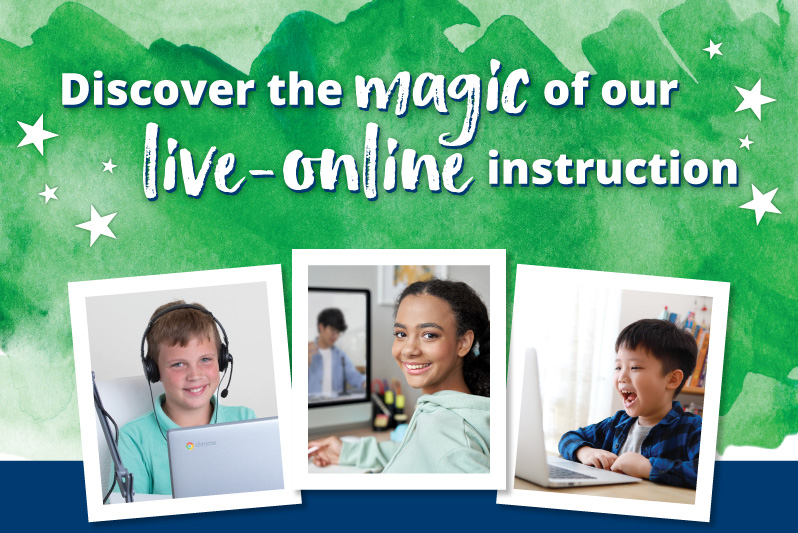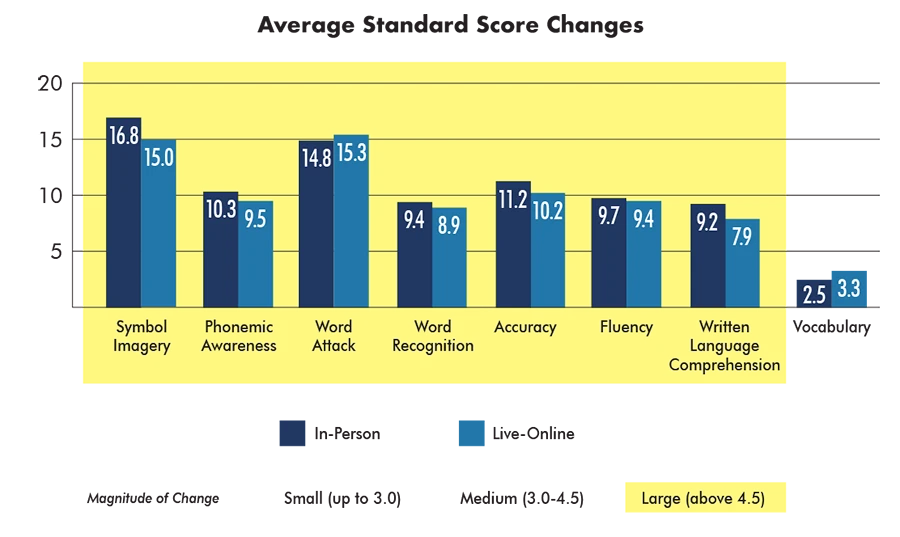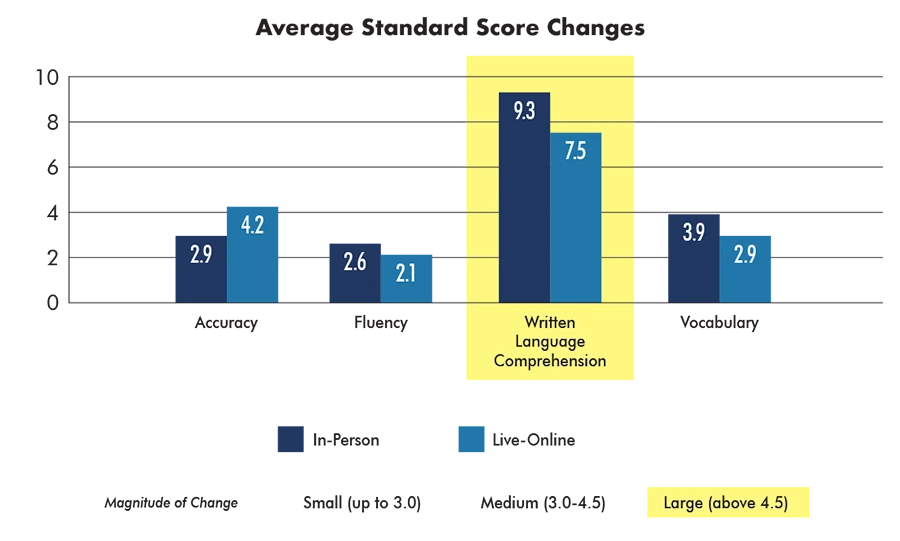Lindamood-Bell Live-Online Instruction: Available Anywhere, Anytime

10% off online instruction for new enrollments between January 21, 2025, and March 31, 2025.*
No matter where you are, our personalized live-online instruction for reading, comprehension, and math is at your fingertips! We provide one-on-one, interactive instruction so your child can catch up or get ahead in reading, comprehension, and math. Our virtual students achieve comparable gains on targeted measures, just like our in-center students.
With the flexibility to learn from anywhere, it’s no wonder families love this option!
Here’s why our online instruction stands out:
- Tailored for Every Student: Our approach is individualized to each student’s needs.
- Dynamic and Engaging: Every session is designed to keep students motivated.
- Convenient and Flexible: Learn from the comfort of your home without compromising quality.
- Proven Results: Research shows that our virtual students achieve gains comparable to our in-center learners.
”It completely changed everything for him. For me, the biggest win with all of this has been being able to close that gap.” – a mother
Proven results:
Pre and post-analysis of our students’ standardized test scores shows that students who received live-online instruction made statistically comparable gains to those who received in-person instruction. Live-online and in-person students tested statistically significantly higher post-instruction on all measures: word attack, word recognition, spelling, rate, paragraph accuracy, paragraph fluency, vocabulary, reading comprehension, phonemic awareness, and symbol imagery.
To ascertain the comparative effects of virtual instruction, we measured our live-online instruction growth metrics against traditional in-person instruction growth metrics to analyze their effectiveness. The comparison revealed statistically significant comparable gains in literacy skills.
Decoding Gains

Average Age: In-Person Students: 9.3 Live-Online Students: 10.0
Comprehension Gains

Average Age: In-Person Students: 11.9 Live-Online Students: 13.1
Summary: Live-online and in-person students tested statistically significantly higher post-instruction on all measures: word attack, word recognition, spelling, rate, paragraph accuracy, paragraph fluency, vocabulary, reading comprehension, phoneme awareness, and symbol imagery. Results indicate that all measures were comparable in progress between the two populations.
Discover the magic of personalized learning with 10% off our live-online instruction!
Call now at 800-233-1819 or request information to learn more about our online instruction.
Spaces are limited—don’t wait! Enroll now to give your student the gift of effective, personalized learning and take advantage of this special offer.
*Discount valid for new enrollments between 1/21/25 – 3/31/25. Must enroll for 80 sessions or the student’s minimum recommendation. Not valid in the UK.





